Batesian Copycats and Mullerian Mimics
Biology 342 Fall 08
Marisa Mirviss and Molly Radany
Mechanism
The question of mechanism concerns the physiological and, to some degree, the genetic components of what make up and allow for the execution of a behavior. To determine a mechanism, one would consider the skeleto-muscular, neurological and genetic capabilities of the organism and behavior in question. In the case of mimicry, a study of mechanism addresses a wide range of physiological features, a sampling of which will aid in answering the question:
How do they do it?
Because of the force of evolution and natural selection in creating mimic organisms over time, genes are the most prominent physical mechanism of mimicry. Some species do have physiological control over their mimicking characteristics (see that awesome caterpillar-snake!!), but primarily, as in the case of most insects, (as well as with lure-type predatory features, etc), the structures of mimicry are innate physiological characteristics.
Examples of Primarily Genetic Mechanism
Soldier Beetle - Genus Chauliognathus
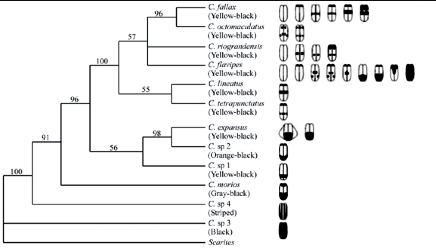
Phylogenic relationship between 13 different species of the Soldier Beetle (Genus Chauliognathus) exhibiting Müllerian mimicry, yellow-black coloration.
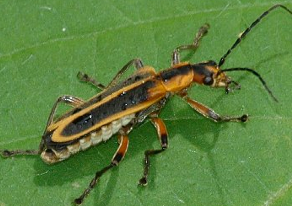
Chauliognathus marginatus
(<http://www.giffbeaton.com/beetles.htm>)
In research by Machado, et al. Genetic analysis of the mitochondrial cytochrome oxidase I (COI) gene* in Genus Chauliognathus (soldier beetles) determined that the species’ yellow-black coloration complex forms a single monophyletic clade, (suggesting common ancestry for this mimicked trait). It was proposed that these beetles evolved the yellow-black pattern to honestly signal visual predators. [6]
*Awesomeness: This is the same gene that has been discovered to be involved in Müllerian mimicry in theinvestigation of the evolution of Heliconius butterflies!
Owl-eyed Moths – Caligo idomeneus
These beauties demonstrate a form of Batesian mimicry where the palatable prey resembles a more threatening predator than the one pursuing it. This is a similar case to that of the soldier beetle: the organism has no direct control over its perceived appearance; rather selective pressure for the moth's owl-eyes has resulted in this pattern.
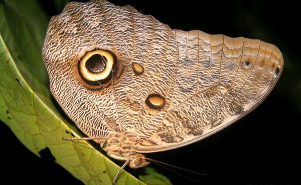
Owled-eye moth silently instils fear into the hearts of predators everywhere(<http://travel.mongabay.com/pix/peru/tambopata-Tambopata_1028_4668.html>)
Examples of Controllable Mechanisms of Mimicry
Hawk moth caterpillars – Family Sphingidae
The caterpillar of the Hawk Moth possesses the rather unique ability to inflate its abdomen in response to the external stimulus of a predator. The markings on the enlarged abdomen clearly resemble the eyes and general shape of a poisonous snake, with which the predator, most likely a bird, would not take chances getting close to. In this case the caterpillar uses Batesian mimicry to imitate an adversary of the preying organism.
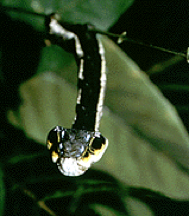
New from Bird-Be-Gone, it’s Inflate-O-Snake! Only three easy payments of $19.95 (accessories sold separately, some assembly required)
(<http://www.alleghany.k12.va.us/animal%20
adaptation%20webpage/animal_mimicry.htm>)
Alligator Snapping Turtle - Macrochelys temminckii
Not as sudden or exciting as inflate-o-snake, but equally frightening, the North American alligator snapping turtle engages in a sort of reverse-Batesian mimicry, by posing as a harmless, tasty prey in order to entice unsuspecting fishies. Just inside of the animal’s mouth is a fleshy “lure” used to attract prey. The turtle is able, when sitting with its mouth open, to wiggle the lure in a worm-like manner, thus attracting fish directly to its mouth.
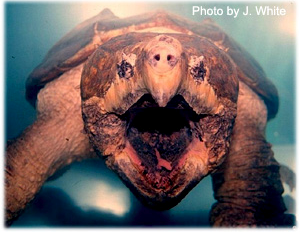
Doesn't the worm look delicious? Too bad the turtle thinks the same of you.
(<http://herpcenter.ipfw.edu/index.htm?http://herpcenter.ipfw.edu/
outreach/accounts/reptiles/turtles/Alligator_Snapping_Turtle/index.htm&2>)